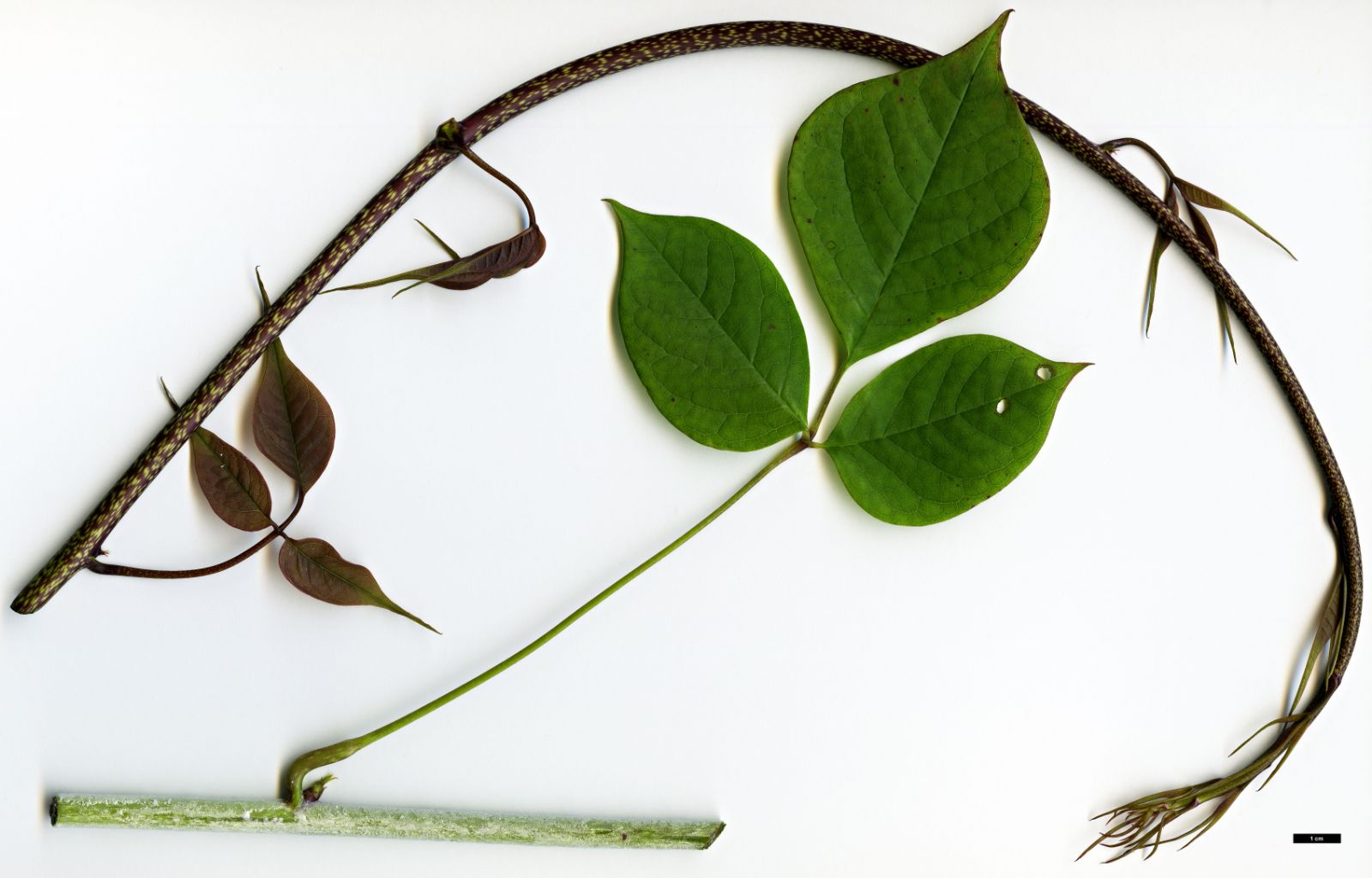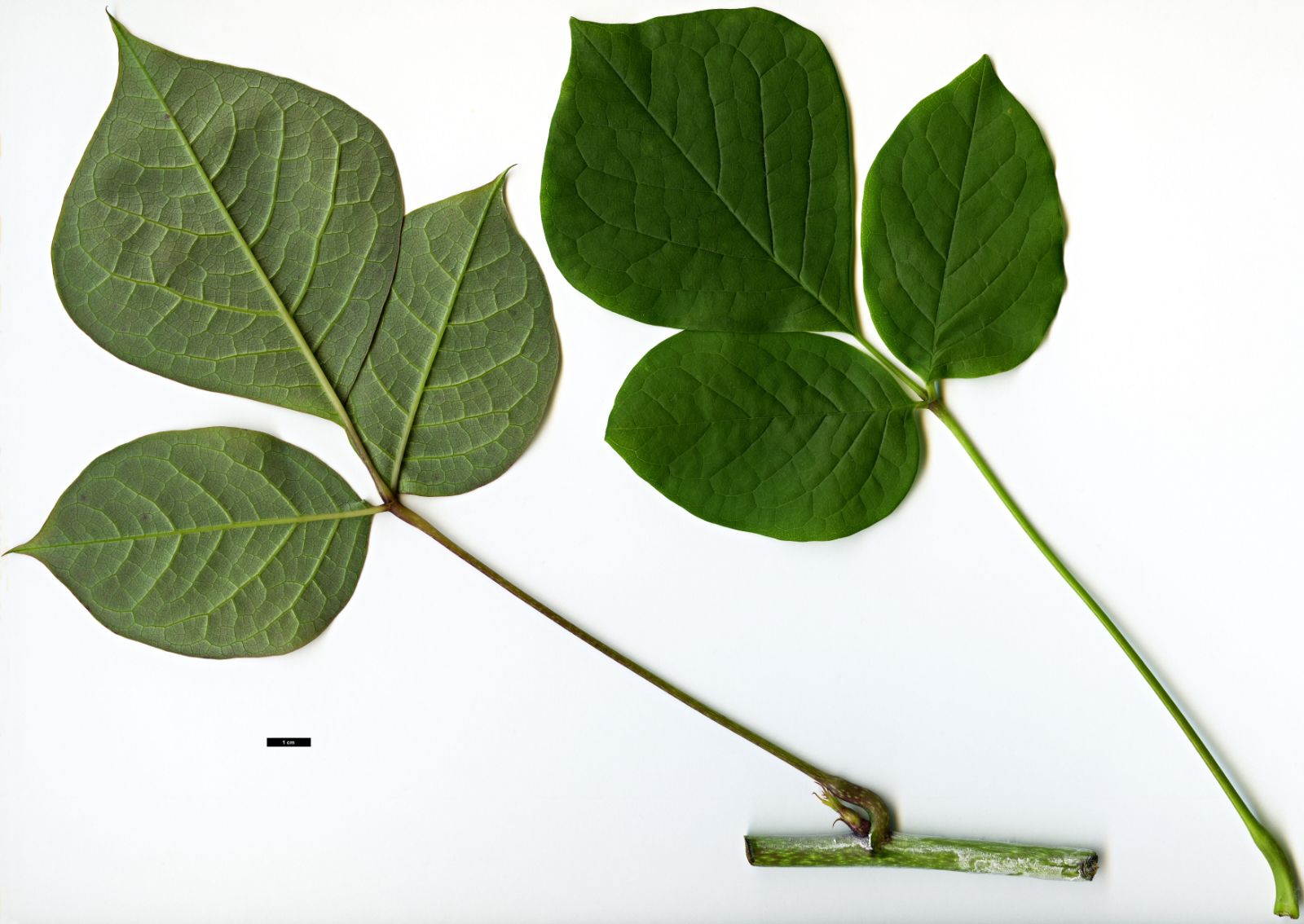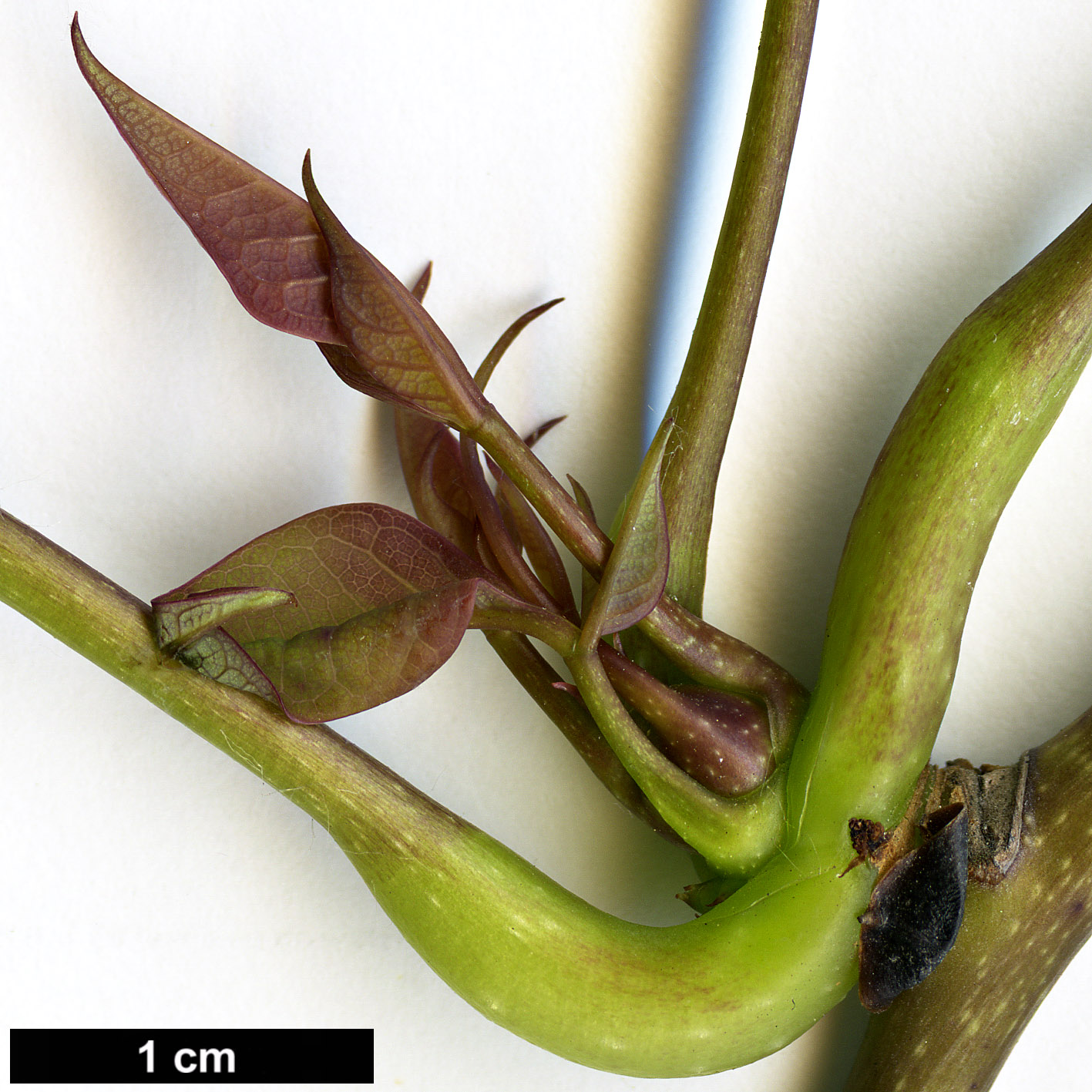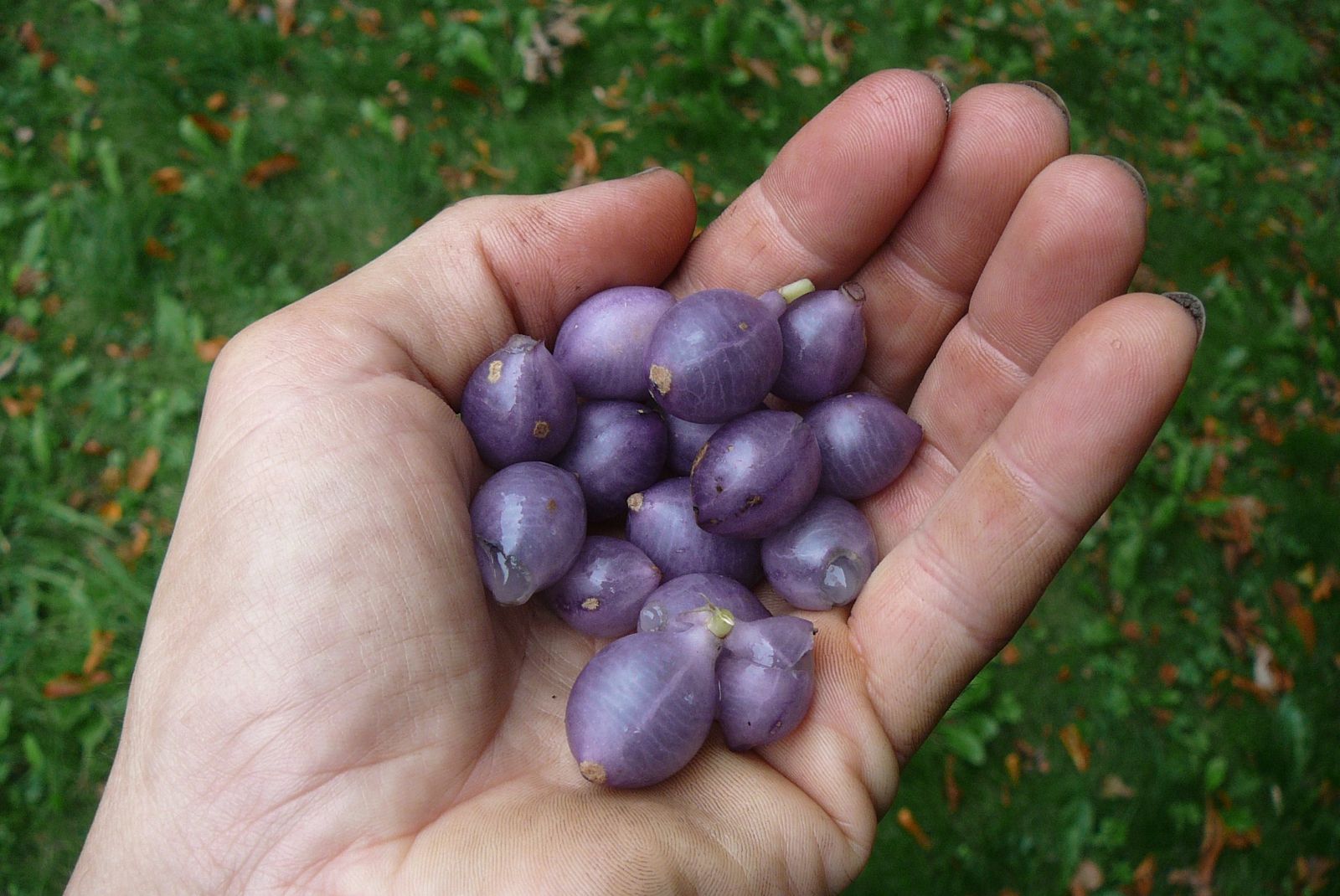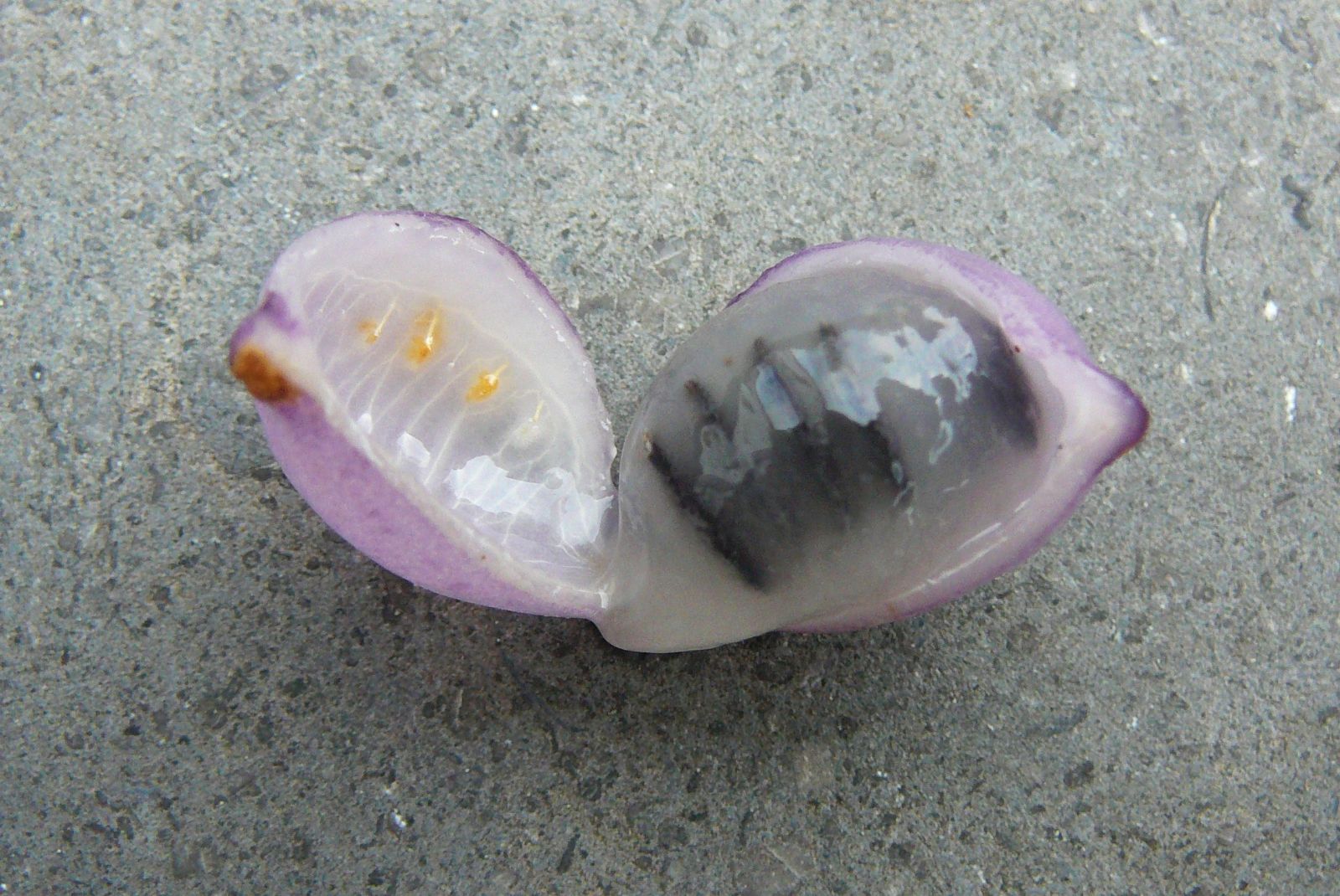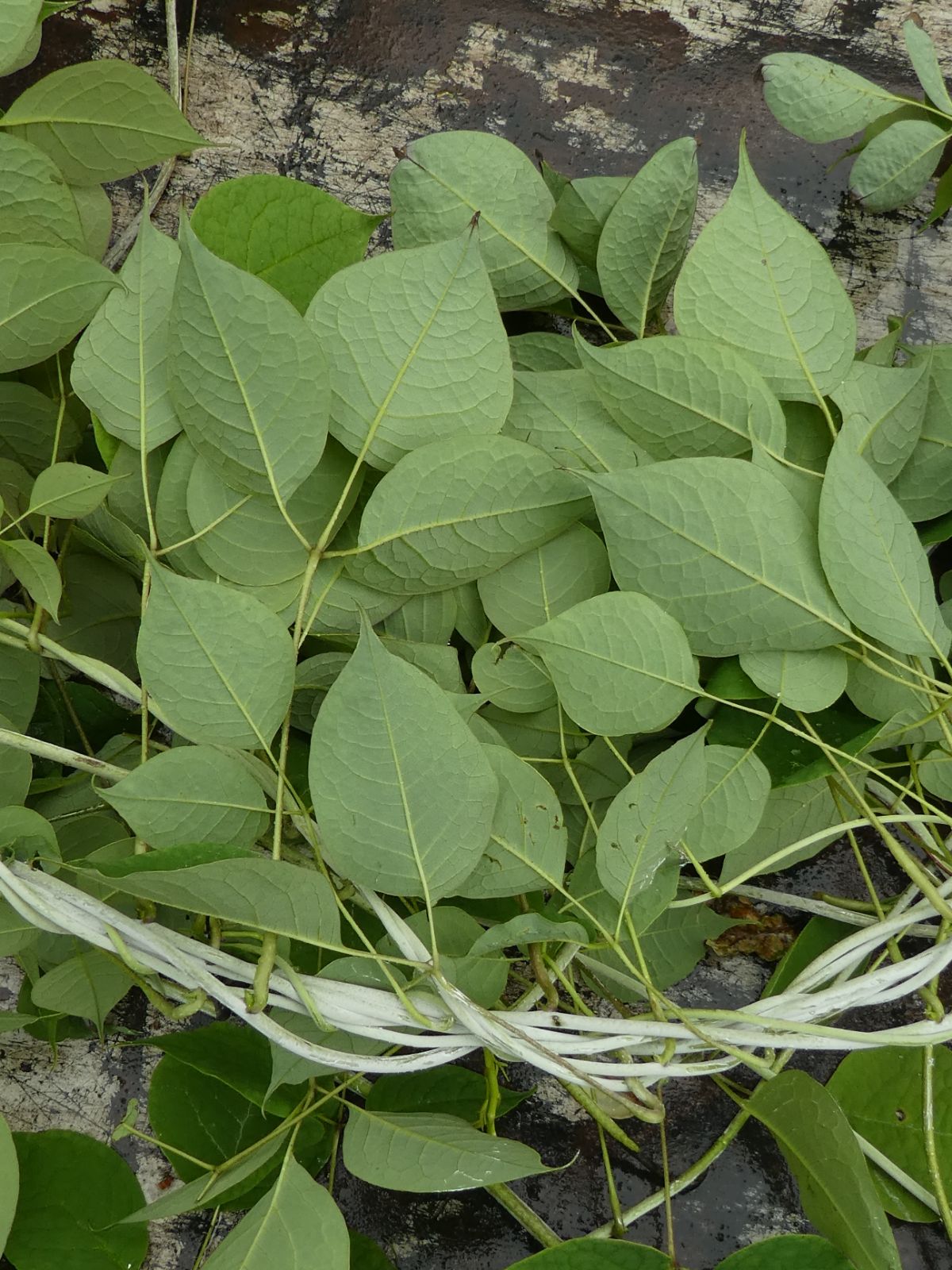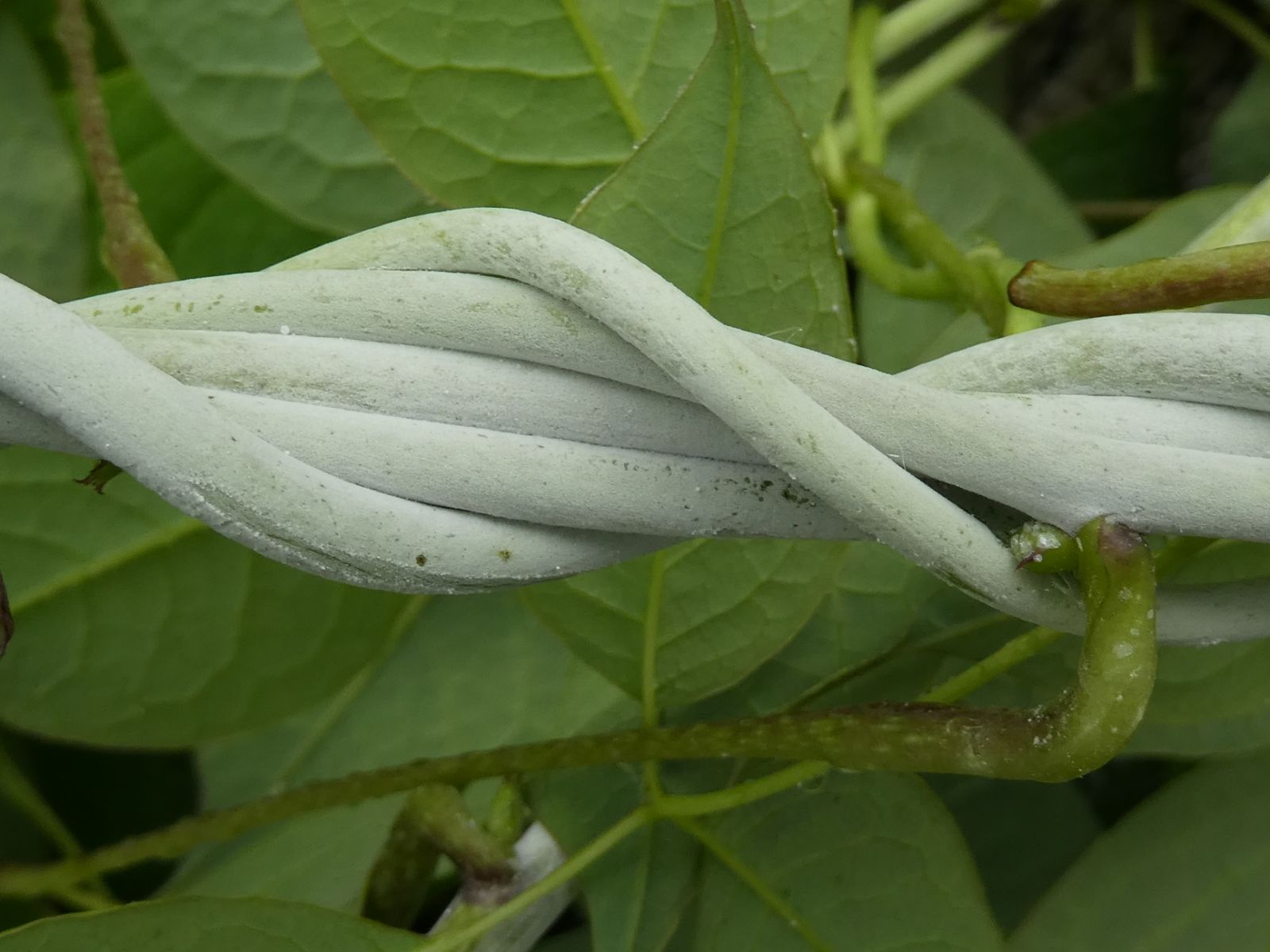Sinofranchetia chinensis
Credits
Article from Bean's Trees and Shrubs Hardy in the British Isles
Recommended citation
'Sinofranchetia chinensis' from the website Trees and Shrubs Online (treesandshrubsonline.
Genus
Other taxa in genus
A large deciduous glabrous climber, covering trees 40 ft or more high, and with a main stem frequently 3 or 4 in. thick; young branches twining, covered with purplish bloom. Leaves composed of three leaflets, borne at the end of a slender purplish stalk 6 to 9 in. long. Side leaflets obliquely ovate-elliptic, terminal one broadly obovate, longer-stalked, all glabrous, glaucous beneath, 3 to 6 in. long, short-pointed, entire. Flowers unisexual, dull white, small, inconspicuous, and of no beauty, produced in pendent racemes about 4 in. long, on short leafy shoots. Fruits about the size of a grape, blue-purple, and borne alternately at intervals on an elongated stalk 8 in. or more long. Seeds black, 1⁄5 in. long.
Native of Central and W. China, up to 7,000 ft; introduced by Wilson for the Arnold Arboretum, and raised at Kew in 1908. Unlike its allies Holboellia and Stauntonia, it is quite hardy. Its value in gardens lies in its vigorous habit and fine glaucous foliage. Also in its fruits, which are borne by female plants even in the absence of a pollinator. It received an Award of Merit when shown by Sir Henry Price from Wakehurst Place in October 1948.


